Canh Riêu Cua Đồng (Field Crab Soup)

Ingredients
Main Protein
350 g freshwater crab (cua xay – cleaned and finely ground)
Vegetables & Aromatics
-
100 g water celery (rau cần – chopped)
-
50 g dill (rau thì là – chopped)
-
5 spring onions (hành lá – sliced)
-
3 tomatoes (cà chua – diced)
-
1 onion (hành tây – thinly sliced)
Cooking Base & Seasoning
-
1 tbsp cooking oil (dầu ăn – for sautéing aromatics)
-
Salt, sugar, seasoning powder (gia vị – adjust to taste)
How to Choose Fresh Tomatoes
- Good tomatoes have a bright red color, are plump, smooth, and slightly shiny, and give off a faint characteristic tomato aroma. Newly harvested tomatoes have fresh stems firmly attached to the fruit. When you cut the tomato in half, the seeds should be yellow and the flesh red, indicating that the tomato is fully ripe and delicious.
- Avoid tomatoes that have scratched or bruised skin, or feel mushy when squeezed, as they may be overripe or spoiled inside. On the other hand, if the tomato is still green on the outside, let it ripen for a few days before use, because green tomatoes contain compounds that are not good for health.
How to Choose Fresh Water Celery
- Good water celery is bright green, clean, with thick stalks. The stalks should be round and even in size. Roots should be minimal, and the stalk joints long.
- Avoid celery with very large stalks that appear white, as they look good but have little aroma and a bland taste. Similarly, celery that is dark green with many roots is old, tough, and fibrous, so it should not be selected.
Nutritional Information
For: Omnivores
Calories per serving: ~120–150 kcal (per 200 ml soup)
Key Nutrients
-
Protein (12–14g)
-
Source: Freshwater crab
-
Benefits: Supports muscle growth, tissue repair, and immunity.
-
-
Vitamins & Antioxidants
-
Source: Tomatoes, dill, water celery, onion
-
Benefits: Vitamin C and beta-carotene support immunity and skin health; flavonoids have antioxidant properties.
-
-
Minerals
-
Source: Crab, vegetables
-
Benefits: Provides calcium, iron, and zinc for bone health, red blood cells, and immune function.
-
-
Healthy Fats
-
Source: Cooking oil
-
Benefits: Helps absorb fat-soluble vitamins and adds flavor.
-
-
Digestive & Aromatic Compounds
-
Source: Onion, spring onion, dill
-
Benefits: Aid digestion, enhance flavor, and provide mild anti-inflammatory effects.
-
1. Extract Crab Juice
- Place the ground crab in a small bowl and mix with clean water, then strain through a fine sieve. Use a total of 2 liters of water, straining in multiple batches until the liquid becomes clear and no longer cloudy.
- Pour the crab juice into a pot and let it sit so the crab meat settles at the bottom. Meanwhile, you can prepare the other ingredients.
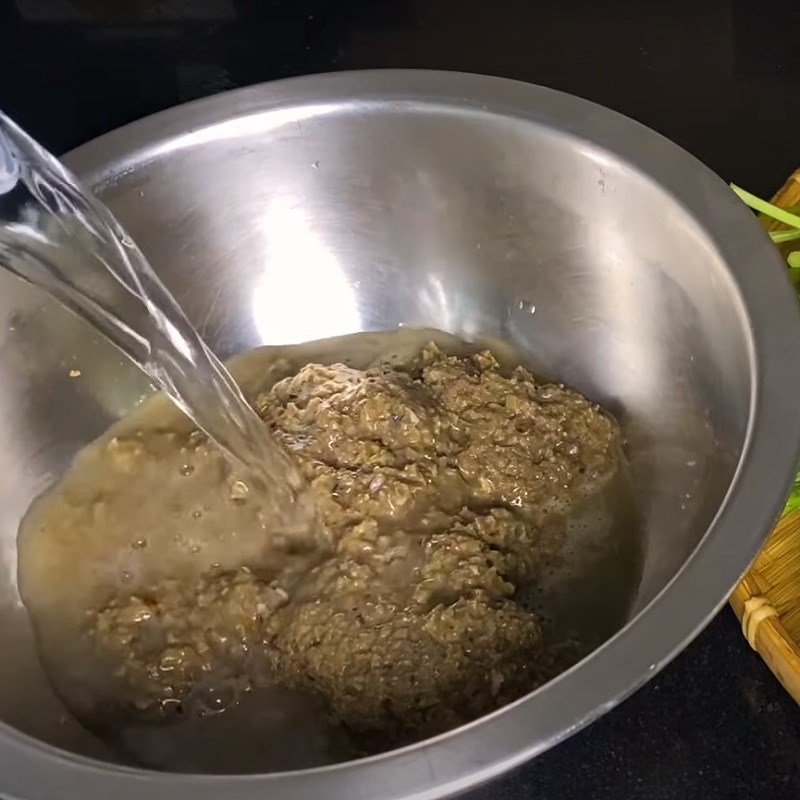


2. Prepare the Remaining Ingredients
-
Wash the tomatoes and cut them into wedges.
-
Peel the onion and cut it into wedges like the tomatoes.
-
Wash the water celery, spring onions, and dill, then cut into sections
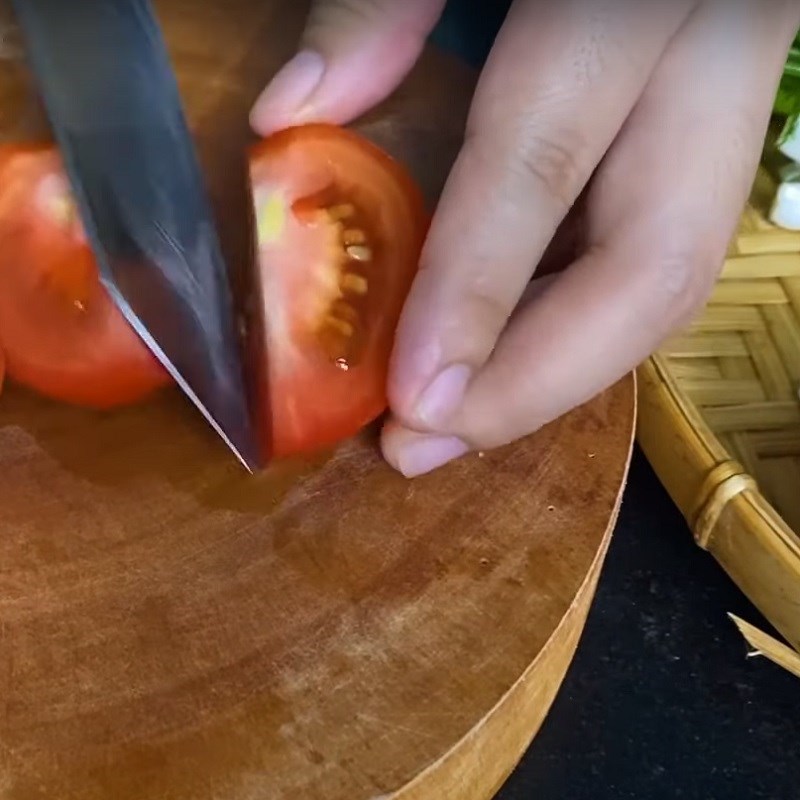
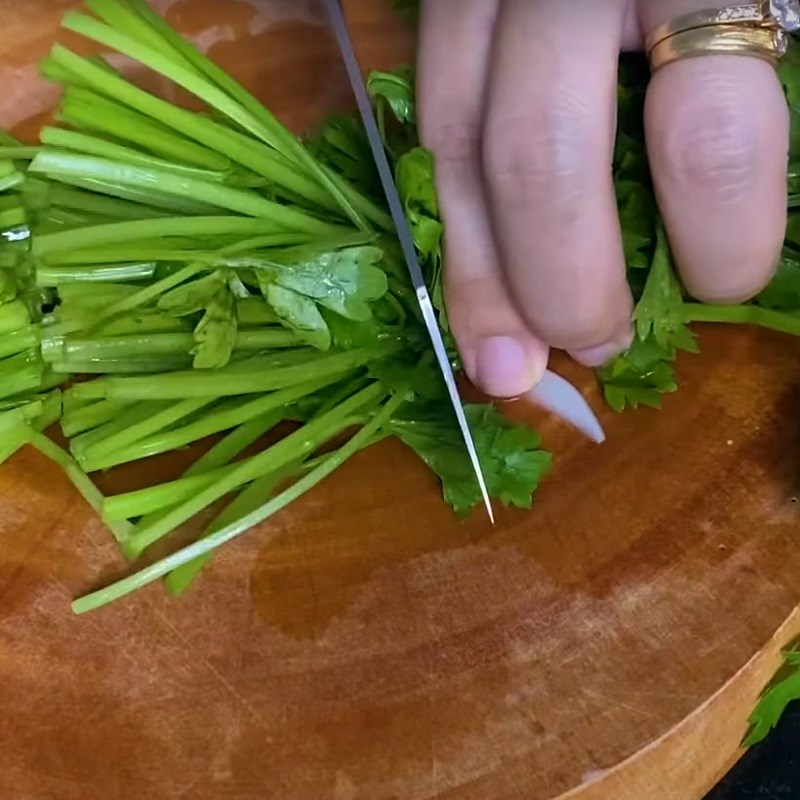


3. Sauté the Tomatoes
Heat 1 tbsp cooking oil in a pan and sauté a small portion of the spring onion whites until fragrant. Add the tomatoes and season with 1 tsp seasoning powder. Stir-fry until the tomatoes release some juice and slightly soften, then turn off the heat.
Tip: Sautéing the tomatoes helps give the soup a vibrant red color.
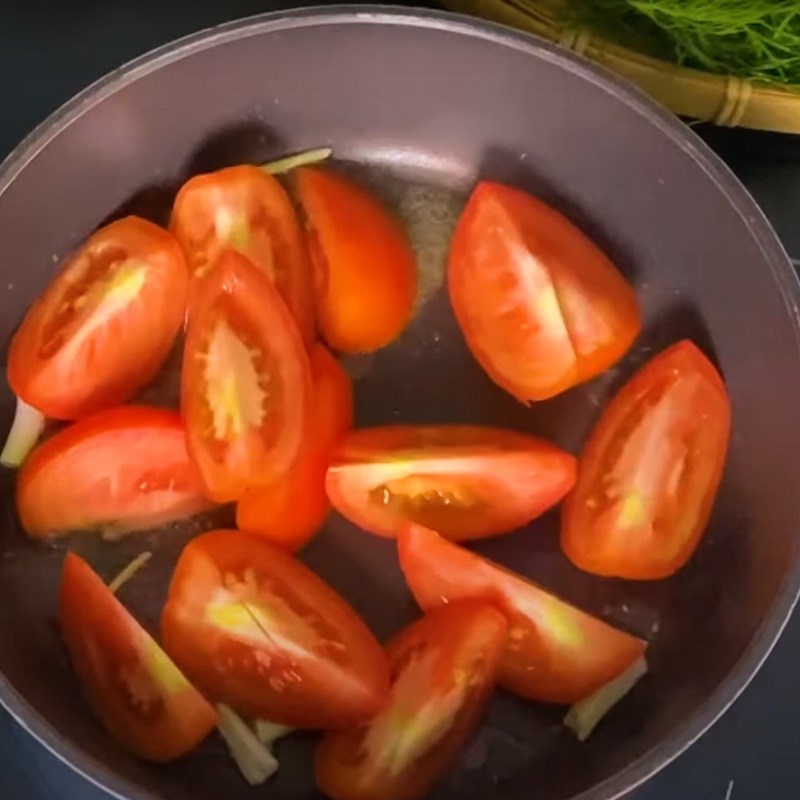
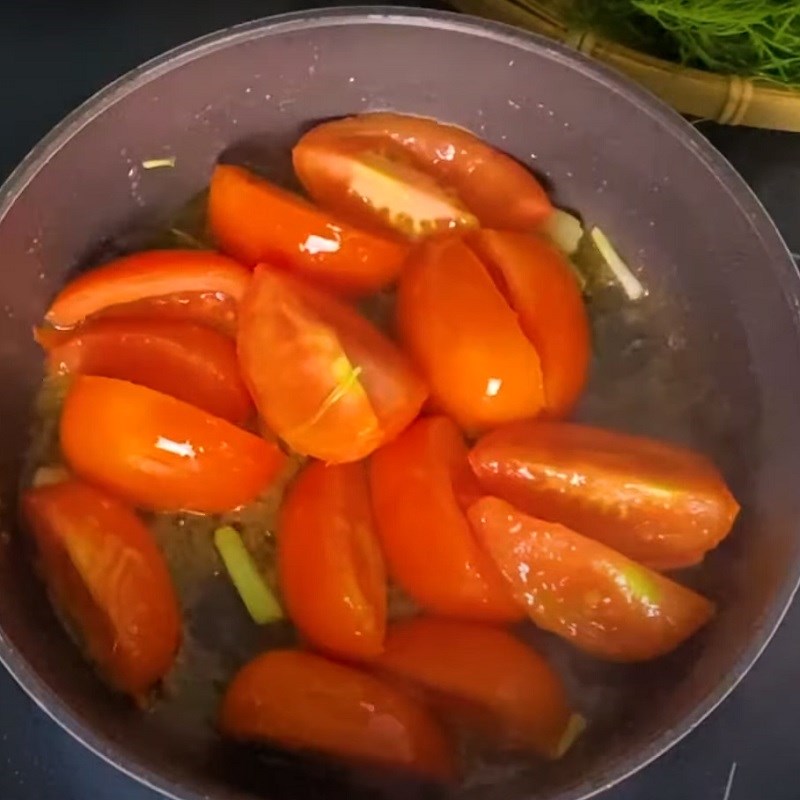
4. Cook the Soup
- Place the crab juice on the stove over medium heat. When the crab meat floats and the liquid is gently boiling, uncover the pot.
- After about 5 minutes, when all the crab meat has risen to the top, add the sautéed tomatoes. Season with 1 tsp seasoning powder, ½ tsp salt, and 2 tsp sugar, stirring gently until dissolved. Skim off any foam with a ladle.
- Next, add the onion wedges and cook for another 3 minutes until just tender. Then add the chopped water celery, spring onions, and ⅓ tsp MSG, stir well, then add the dill and turn off the heat.
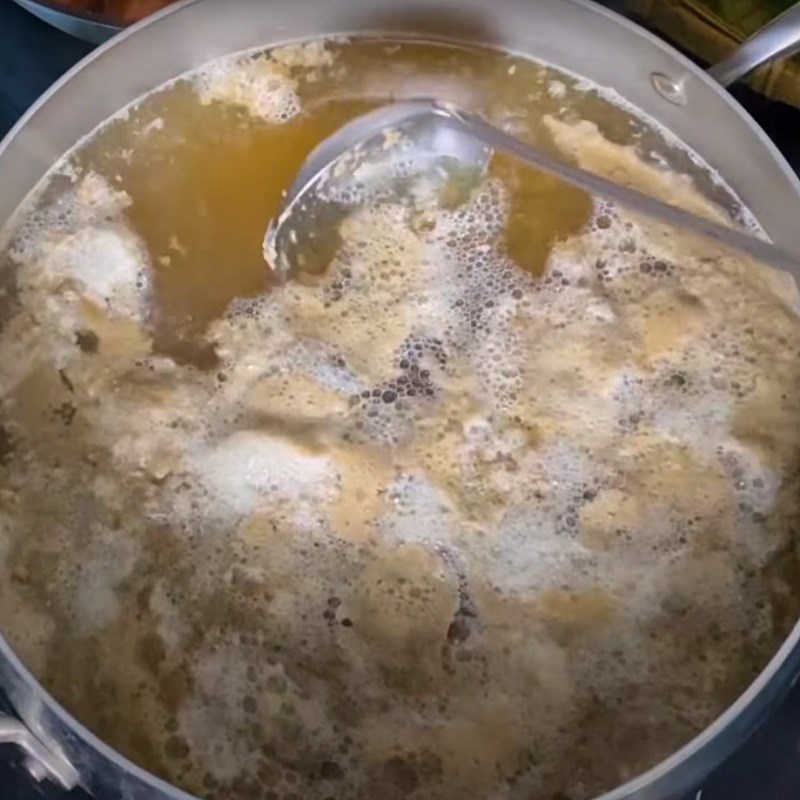

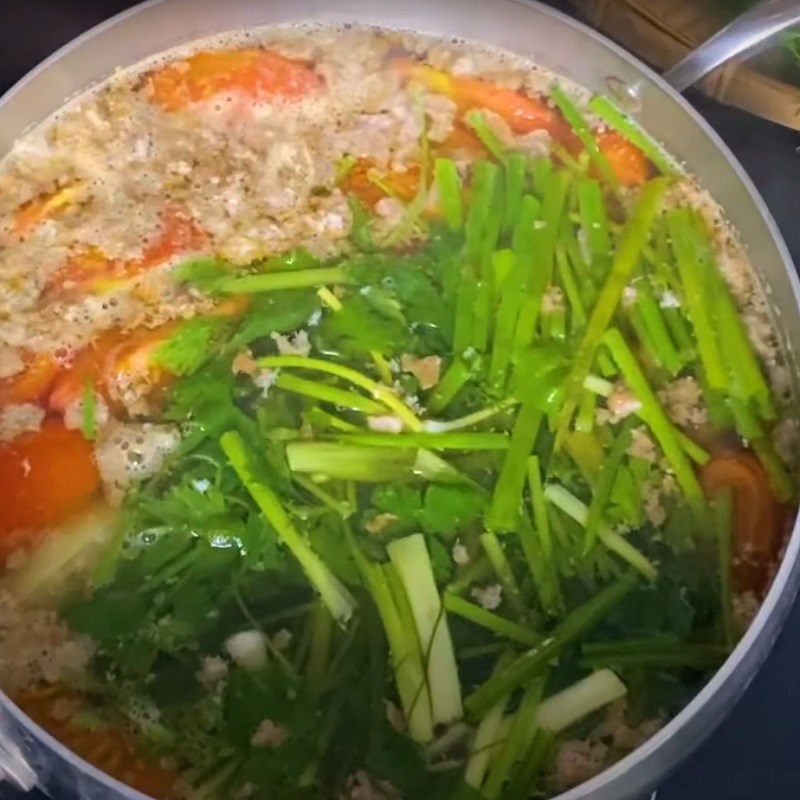
The soup should have a naturally sweet broth, fresh vegetables, and rich crab meat. Serve it with rice or vermicelli noodles for a delicious meal.

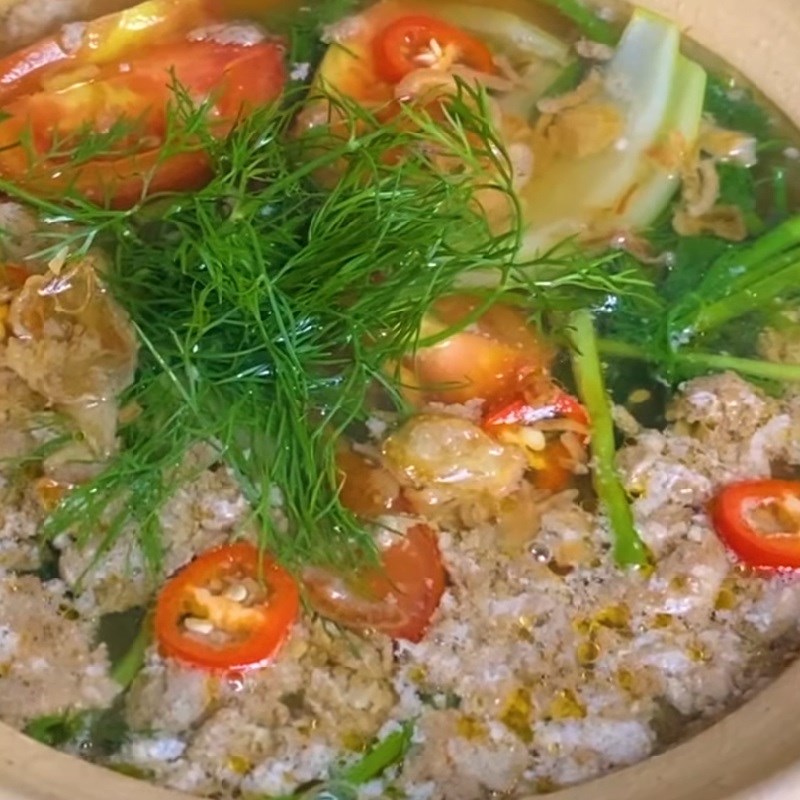
Field Crab Soup: A Taste of the Countryside
In the quiet villages scattered along northern Vietnam’s waterways, mornings begin with the soft splash of barefoot farmers wading through shallow ponds, nets in hand, searching for tiny freshwater crabs. That same essence — the freshness of the water, the subtle sweetness of the crab, the earthy scent of mud and herbs — finds its way into the bowl. As the crabs simmer slowly in golden broth, the aroma of ripe tomatoes and fragrant herbs rises, mingling with the smoky warmth of fires crackling in nearby kitchens.
Each bite reveals tender crab meat that carries a hint of natural sweetness, a touch of sourness from the tomatoes that awakens the palate, and a whisper of umami grounding the flavor. Tiny bubbles of fat float on the surface, catching the light, releasing bursts of aroma with every stir. The textures — soft noodles or rice, succulent crab, and the occasional crisp of fried shallots or fresh herbs — contrast and harmonize, inviting slow, mindful bites.
But beyond taste, the dish carries the rhythm of the countryside. The warmth of the broth spreads through your hands and chest, anchoring you in a moment that is both intimate and vast — a small window into the daily poetry of rural life. By the last bite, the flavors linger, not just on the tongue but in memory, a reminder that food is both sustenance and story, and that the simplest ingredients, cared for patiently, can carry the soul of a place.

